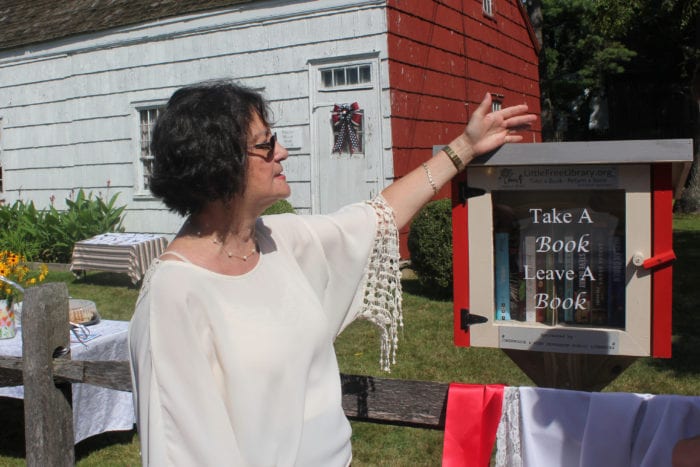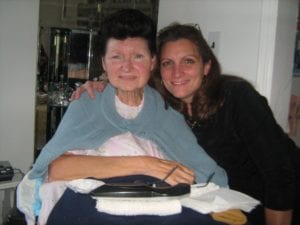By Daniel Dunaief
He helped build it and now a range of researchers are coming.
Lin Yang helped create the LiX beamline at the National Synchrotron Light Source II at Brookhaven National Laboratory, which is attracting researchers eager to study the fine structure and function of everything from proteins to steel.
The lead scientist for the LiX beamline at the NSLS-II at BNL, Yang was the control account manager for the construction of the beamline and was the spokesperson for a team that wrote the original beamline development proposal.
“In our case, the scattering from the sample is sensitive to the underlying structure” of materials, Yang said. “That’s why people want to use scattering to study their samples.”
Like the other beamlines at the NSLS-II, the LiX enables scientists to use sophisticated equipment to search for links between structures and function. Each beamline has a three-letter acronym. In the case of LiX, the “Li” stands for life sciences, while the “X” represents X-ray scattering.
When they designed the beamline, LiX researchers were seeking optics that were capable of producing a beam to conform to the specifications required for different types of measurements. They then designed an experimental station that is suitable for handling biological samples. Specifically, that involved developing an automated sample handler for measurements on protein molecules in solution.
“With atomic resolution structures and functional assays, we do get new insights [about] important ions such as calcium,” which are involved in signaling and physiology, Qun Liu, a principal investigator in the Biology Department at BNL, described in an email. “LiX will be essential to allow us [to see] the transport process in real time and space.” Liu wrote that Yang is an “outstanding X-ray beamline scientist” who is also well known for his pioneering work on membrane diffraction.
The ability to perform measurements using a beam of a few microns is “pretty unique right now,” which also attracted researchers working with steel samples, Yang said. “When we designed the instrument, our focus [was] on the biological structure” but the beamline is “versatile enough” that it has found other uses, Yang said.
Researchers working with steel realized that the same diffraction-based approach to finding underlying structures in living tissue could also shed light on the structures of their samples.
In everyday life, diffraction is visible from the wavelengths of light that form the hologram on a credit card. Scientists working with steel have been applying for time on the LiX beamline, too, creating a competitive environment for researchers working in both fields.
Lynne Ecker, the deputy department chair in the Nuclear Science and Technology Department at Brookhaven National Laboratory, has used the beamline to study the effect of neutrons and ions on steel.
“Ions will only damage steel so far,” Ecker said. The LiX is “perfect” to study the degree of the damage. Ecker said she’s tried this kind of analysis in other places, but the LiX provides better spatial resolution. The LiX scientists are working on improving the degree of automation for sample handling and data processing.
“We are about to install a six-axis robot, which is typically seen in industrial automation, to help realize unattended overnight measurements on protein solution samples,” Yang said. The robot is already at the facility and Yang and his team will be installing the support structure to mount the robot in the experimental station this month. “The more challenging task is to put the software in place so that the beamline can control the robot,” he explained in an email.
The LiX beamline uses lenses made from beryllium, which are transparent to X-rays. For X-rays at the wavelength of about one angstrom, about 93 percent can pass through about a millimeter of beryllium. That compares favorably to aluminum, which allows about 2 percent to pass through at the same thickness.
The LiX beamline can run at 500 frames per second, which produces a wealth of data. In practice, it may take up to a second for the detector to accumulate enough signal from the sample. Still, the beamline can generate enough data that the experimenter may not be able to examine it frame by frame, which makes automated data processing more important.
Scientists have used the beamline to explore the structure of plants. These researchers mainly want to understand how materials like cellulose are organized within different parts of the plant and in different plants.
In bones, researchers can differentiate between organic matter like collagen and inorganic matter. Not only can they determine where they are, but they can also explore their orientation in a sample. Bones are easy samples since collagen and minerals in bone have distinctive scattering and diffraction patterns, Yang said. Researchers “like to look at how biological molecules change their shape as they interact with their functional partners,” Yang said.
A resident of East Setauket, Yang lives with his wife Mian Wang, who is an architect in Farmingdale, and their two daughters. A fan of tennis, Yang plays as often as he can during the summer at the Three Village Tennis Club.
Yang grew up in Yunnan province in the southwest of China. Trained as a physicist, Yang picked up knowledge of molecular biology from his years of working with other scientists. In his work, he gets to combine his talents in engineering, programming and molecular biology.
“We learn new things when we interact with our users/guest researchers since we first need to learn about their problems before we can help solve them,” he described in an email. Yang hopes the research he and the team at the LiX support will result in high-impact publications. “As more researchers know about us and our capabilities, I expect more people will want to perform experiments at our beamline,” he said.





 Soldano contributed issues of Captain America, Star Wars and Power Rangers comics to join such titles as “Leaving Time” by Jodi Picoult, “Gone Girl” by Gillian Flynn, “The Stranger” by Harlan Coben and the Grimm fairy tale “Snow White and the Seven Dwarfs.”
Soldano contributed issues of Captain America, Star Wars and Power Rangers comics to join such titles as “Leaving Time” by Jodi Picoult, “Gone Girl” by Gillian Flynn, “The Stranger” by Harlan Coben and the Grimm fairy tale “Snow White and the Seven Dwarfs.”














 Tell me a bit about the story.
Tell me a bit about the story. 









